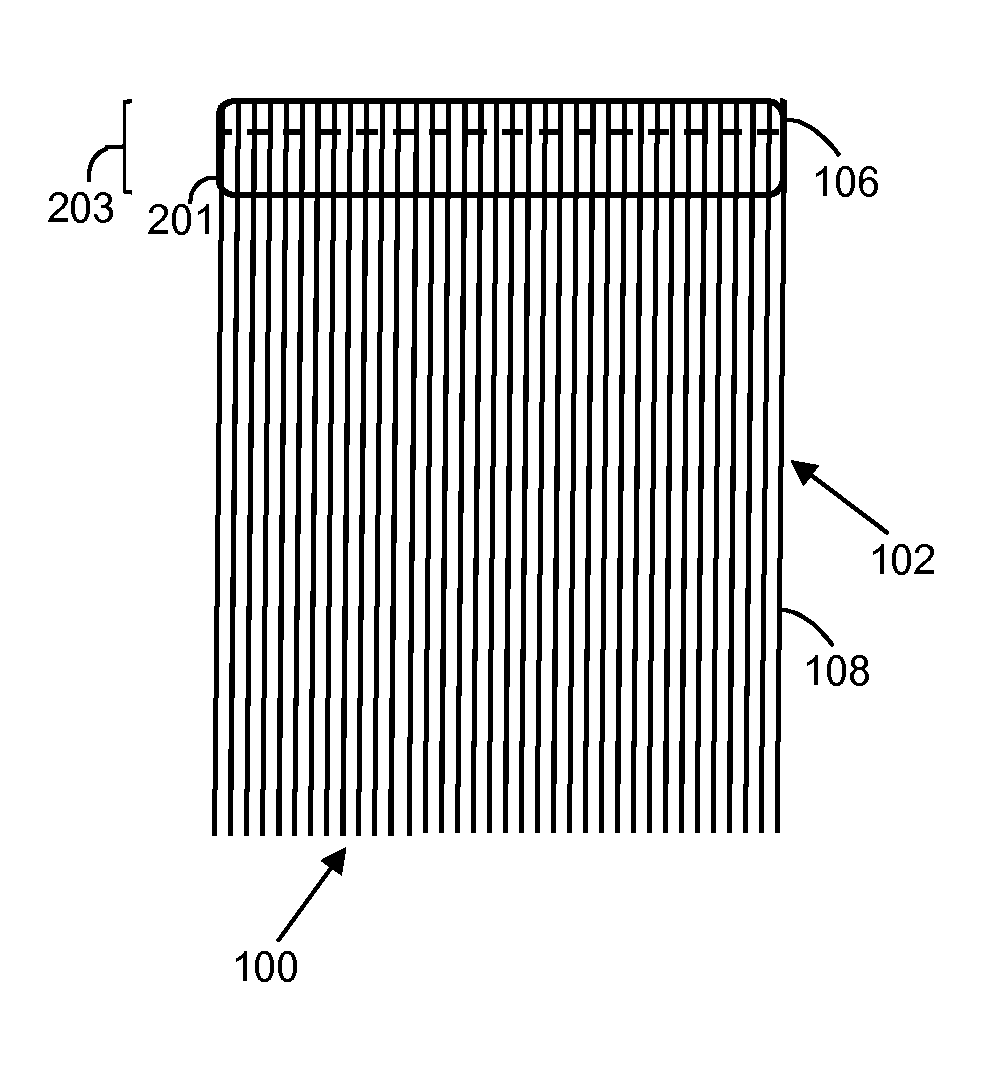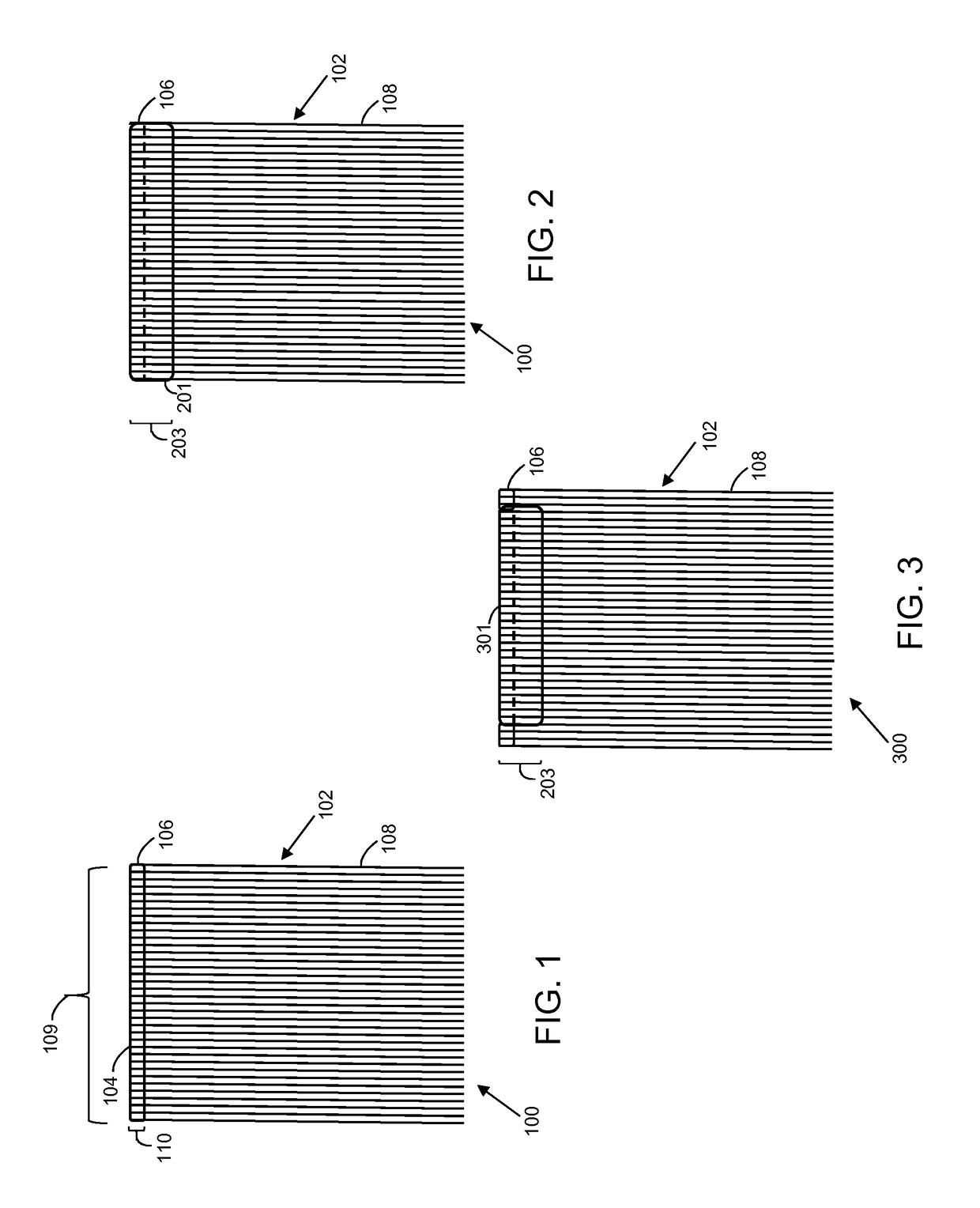Hair extension with reduced detectability
a detection ability and extension technology, applied in the field of hair extension, can solve the problems of virtually undetectable side of the section of hair with the much thinner exposed polymer, damage to the user's hair, etc., and achieve the effect of convenient attachment of the section of hair, reliable and versatile attachment, and wide substrate width
- Summary
- Abstract
- Description
- Claims
- Application Information
AI Technical Summary
Benefits of technology
Problems solved by technology
Method used
Image
Examples
Embodiment Construction
[0026]In this document and the appended claims, relational terms, such as “first” and “second,”“top” and “bottom,”“front” and “rear” or “back,” and the like are used solely to distinguish one entity or element from another entity or element without necessarily requiring or implying any physical, logical, or directional relationship or order between such entities or elements. The terms “comprises,”“comprising,”“includes,”“including,”“contains,”“containing,”“has,”“having,” and / or any other variations thereof are intended to cover a non-exclusive and non-exhaustive inclusion, such that a process, method, article, apparatus, device, or anything else that comprises, includes, contains, or has a list of elements, characteristics, or features does not include only those elements, characteristics, or features but may include other elements, characteristics, or features not expressly listed or inherent to such process, method, article, apparatus, device, or thing. The term “plurality of” as ...
PUM
 Login to View More
Login to View More Abstract
Description
Claims
Application Information
 Login to View More
Login to View More - R&D
- Intellectual Property
- Life Sciences
- Materials
- Tech Scout
- Unparalleled Data Quality
- Higher Quality Content
- 60% Fewer Hallucinations
Browse by: Latest US Patents, China's latest patents, Technical Efficacy Thesaurus, Application Domain, Technology Topic, Popular Technical Reports.
© 2025 PatSnap. All rights reserved.Legal|Privacy policy|Modern Slavery Act Transparency Statement|Sitemap|About US| Contact US: help@patsnap.com



